Being a hardcore hockey fan in the cap era can do funny things to one’s head.
For one, I haven’t once caught myself caring about the result of a Leafs game this year – for someone who used to miss school the day after important losses growing up, that’s a strange concept.
And then today, when a trade like the Dion Phaneuf deal comes across the wire, my mind immediately started spinning on the cap logistics and what it all means three, four, five years down the road.
After sitting glued to Twitter for 30 minutes following the trade, I got up and walked down the hallway at work and heard two casual fans remark, “the Senators acquired the Leafs’ captain? What?”
It is mindblowing if you take a step back and think about it. A nine-player inner-division trade that sends captain Dion Phaneuf to the Ottawa Senators for the next five years.
Lou Lamoriello’s first major move as Leafs GM was as expectedly unexpected as we imagined. Bryan Murray apparently broached the subject on an unrelated call Lamoriello made to him a few months ago, but how much do you want to bet a born negotiator like Lou had the subject waiting somewhere at the back of his mind?
Lamoriello automatically wins this trade from the Leafs perspective simply because he didn’t retain salary, beyond what they took on in 2016-17 in the form of bad contracts, and got some decent futures to boot.
There is something to be said about how tearing it down is much easier than building it up, but this wasn’t an easy deal to make without retaining salary. Lou is one for one.
Let’s start with a note on Phaneuf.
He was never the elite talent Phil Kessel was while he was here, but the same sentiment applies — Phaneuf was a good player who deserved a better supporting cast than what management armed him with. He was a consummate professional in the good times and, much more frequently, the trying times. It’s tough to wish him the best knowing he’s now a member of the Senators organization, but on an individual level, I do hope he finds success in Ottawa.
I think holding onto Dion Phaneuf for the next couple of years probably would have offered more value to the organization than the second rounder plus Lindberg is likely to down the road. Not to downplay Mark Hunter’s ability to draft or Lindberg’s value as a reasonable prospect, but between his leadership and ability to offer a solid top-four veteran presence that can stabilize a pairing alongside a younger D partner, the Leafs would’ve ideally kept him while they go through a couple more lean rebuilding years. It sounds crass, but he’s been “a good captain for a losing team.” He can play big minutes against good players, even if you’re not a great team if he is. Just look to Edmonton for an example of the issue with not properly insulating young players as you rebuild.
The problem was the term was unworkable, and getting out from under years 3, 4 and 5 of the remaining years on his contract without retaining salary is crucially important as Leafs management goes about their restructuring. The ability to grab a prospect and a second round pick is just gravy on top of freeing up all $35 million of his contract over the next five years. We all know the cap space is the biggest asset in the trade, and it’s not close.
In terms of what else the Leafs gave up:
Matt Frattin – Now 28, he has one skate in Europe at this point. Not a prospect anymore, this is a simple SPC dump. I’ll always be left wondering why it didn’t come together better for Frattin given he has NHL tools – his skating and his shot – but it just didn’t. The knee injuries might have been a significant part of it.
Casey Bailey – He skates below a professional level, and I’d be surprised if he ever becomes even a depth option for an NHL team. The college free agent signing was a worthwhile flyer for the Leafs, but burning one year of his two-year entry level contract last season didn’t just benefit the player and his agent — it gave the Leafs flexibility to shed the SPC after one season if it didn’t work out. This opens up the SPC slot a little earlier, ahead of the deadline when they might need the flexibility.
Cody Donaghey – Undrafted, Donaghey hasn’t progressed all that much since the Leafs signed him following his plus-one year. He’s battled a serious knee injury and has showed some promise since the trade to Moncton, but it’s another SPC dump. Donaghey’s probably the only one in the deal outside of Phaneuf that has a chance of offering value, but it’s definitely an outside shot.
In terms of what else the Leafs got:
Jared Cowen – There is going to be a temptation to say, “change of scenery!” and “Mike Babcock is a miracle worker though!” and “he’s a former top 10 pick!” but as someone who has taken in quite a few Senators games in person the past few years, Cowen really is that bad. A haggard skater, a questionable decision maker with poor positional sense and a limited skillset, the important part is that he can be bought out for a wash thanks to the cap credit, and he’s only signed to his ill-advised contract for one more season. The Leafs have generally played with a little more structure than the Sens have this season – not that you’d know it from Saturday — but he isn’t going to be surrounded with much in Toronto in terms of being placed in a position to succeed.
Milan Michalek – Michalek has a chronic case of boneitis, but there’s a chance he comes to camp healthy next season, has a decent offensive year and the Leafs can flip him for a draft asset at the deadline when he’s a few months away from free agency. He becomes the Leafs’ Michael Grabner next year given his scoring history, contract status and cap hit. Maybe it works out, maybe it doesn’t – doesn’t really matter in the grand scheme.
Colin Greening – Expect Greening to take on the “AHL veteran” role that is vacated by Mark Arcobello and Matt Frattin at the moment, except he’s not anywhere near as productive. Only 13 points in 41 AHL games this season, but most importantly there’s just one year left on his deal, with a cap hit of 2.65 million, or $1.5 million when buried in the AHL.
Tobias Lindberg – Far be it from me to prognosticate on prospects I’ve never seen play, but his production at 20 in the AHL means he’s outplaying his fourth round pick status. The nice thing is that the Leafs are not longer acquiring B-level prospects and hoping for the world. He joins a prospect group with Kapanen, Nylander, Brown, Nylander, Bracco, Dermott, Timashov ahead of him on the radar and much more to come in the next couple of seasons. Here’s Brock Otten’s excellent scouting report on Lindberg:
What a great find for the Senators, and for the Generals this year. Lindberg filled a critical scoring line role for Oshawa during their championship season. Lindberg is at his best off the rush, using his size and speed to drive the net. He’s also got a terrific release and he’s great at using opposing defenders as screens as he flies down the wing. While he’s not an overtly physical player, and he’s not yet a terrific player along the wall, he does involve himself in these aspects and he excels at being the guy who finds himself in the right spot for scoring chances. As a two way player, Lindberg is solid and he uses his size to effectively separate players from the puck on the back check. Like Paul, Lindberg will be turning pro this year and should take on a top 6 role at the AHL level. I expect him to have a good year, at the very least scoring 20 goals.
We’ll have much more to come breaking down the individual pieces of this deal in the days to come.


![Craig Berube Post Game, Blues 5 vs. Leafs 1: “We gave them three goals… The [3-1] goal was lazy hockey” Craig Berube, Toronto Maple Leafs head coach](https://mapleleafshotstove.com/wp-content/uploads/2024/10/berube-craig-lak-pg-218x150.jpg)

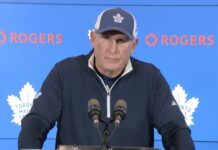


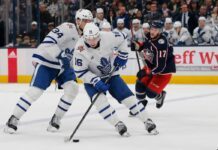




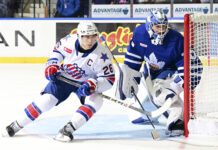











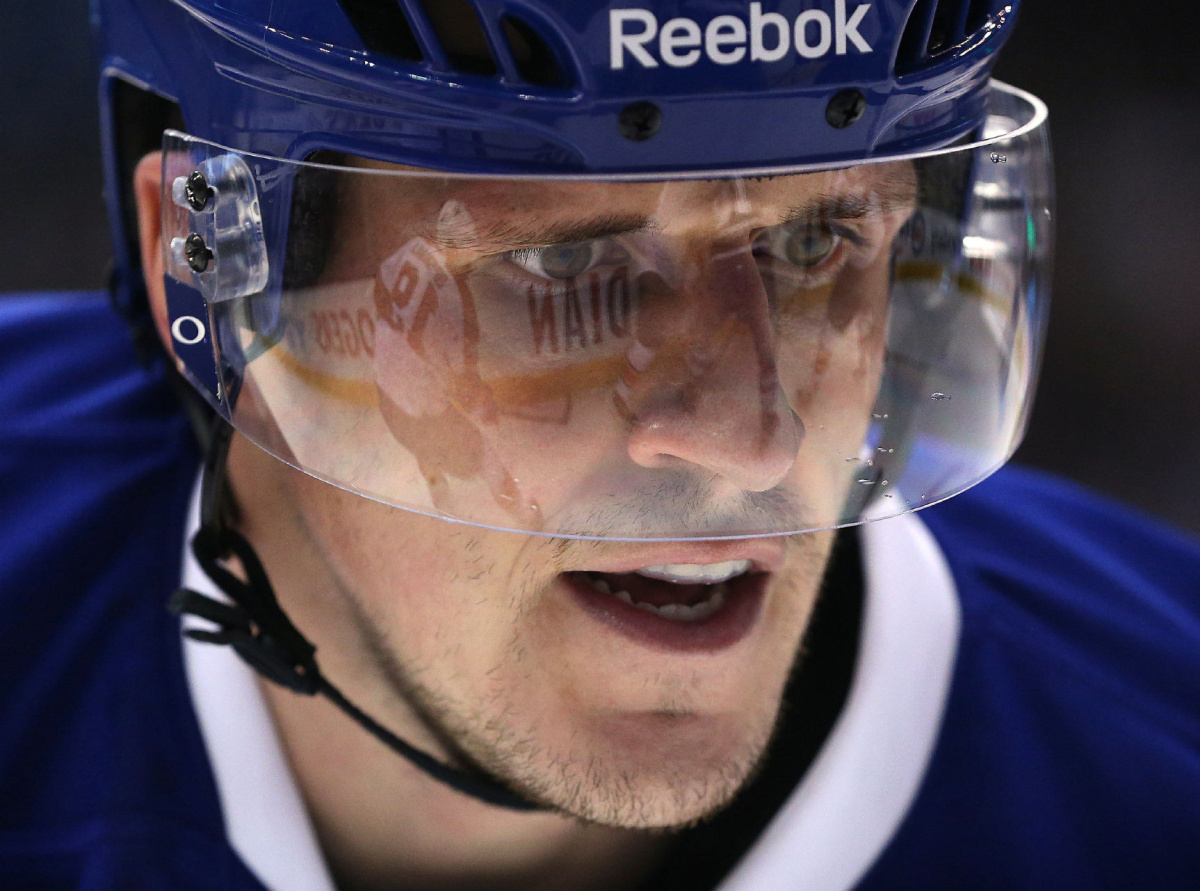
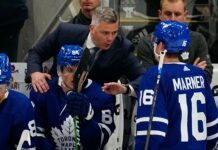


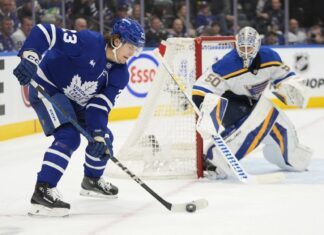
![Craig Berube Post Game, Blues 5 vs. Leafs 1: “We gave them three goals… The [3-1] goal was lazy hockey” Craig Berube, Toronto Maple Leafs head coach](https://mapleleafshotstove.com/wp-content/uploads/2024/10/berube-craig-lak-pg-100x70.jpg)






![Craig Berube Post Game, Leafs 5 vs. Lightning 2: “[Stolarz] is a quality, quality goalie… He’s been excellent for us” Craig Berube, Toronto Maple Leafs head coach](https://mapleleafshotstove.com/wp-content/uploads/2024/09/berube-pg-tor-100x70.jpg)
